Case Manager Guidance Tools
Guidance for Conversations Worksheets
Each section of the Guidance has an accompanying worksheet. They can be used to record the information collected during your conversations with the individual. Completed worksheets can be kept in the person’s file and used to inform their plan and future actions. We encourage you to share them with individuals, families and other agency support staff. The worksheets are an excellent way to keep each team member informed and guide their actions.
Worksheets are found at the end of the document. Below are individual files you may download and use.
Starting the Conversation Worksheet [PDF]
Focusing on the Destination Worksheet [PDF]
Career Success Worksheet [PDF]
Recommended resources
Having multiple tools to draw upon when planning can be helpful, especially when challenges and unique circumstances arise. In addition to the worksheets above, there are other planning tools available to help you support people to assure their vision of work and community life becomes a reality. Here are some you may find useful:
LifeCourse: Integrated Long Term-Support Needs Template June-2016 [PDF]
Once people have figured out the types of supports needed and/or existing, this template is a way to apply the supports to a daily/weekly schedule. The worksheet includes instructions and an example on the back.
LifeCourse: Integrated Supports Star worksheet February-2017 [PDF]
All people need support to lead good lives. Using a combination of many different kinds of support helps to plot a trajectory toward an inclusive, quality, community life. This tool will help families and individuals brainstorm the supports that they already have or might need in order to work in partnership to make their vision for a good life possible.
Check out additional information like training modules, tools and videos specific to employment on the Charting the LifeCourse website.
More person-centered practice tools can be found at on Helen Sanders and Associates. Below are a few you may find useful.
Relationship map [PDF]
This tool is used to provide a picture of important relationships in a person’s life. It can help guide who to invite to planning meetings and what relationships need to be nurtured and strengthen. It can also be used to illustrate isolation and where additional support is needed. For employment planning, it can help identify possible job networking opportunities and guide discussions around fear of losing relationships as work situations change.
The 4 + 1 Person Centered Planning Tool l [PDF]
This tool can help people think about a particular challenge or situation and plan for change. Bring together a group of people who care about the person to gain a wide range of perspectives. The four main questions are: What have you tried? What have you learned? What are you pleased about? What are you concerned about? The answers to these questions lead to the ‘plus 1′ question – based on what we know, what should we do next?
Communication Chart [PDF]
You may support people who communicate primarily through behavior and not words. A communication chart can be used to understand the person’s likes, dislikes and preferences. It can also help the supervisors and co-workers understand the person better and lead to stronger personal connections.
The Decision Making Profile [PDF]
This tool helps to create clear picture about how a person makes a decision and the best way to provide support in decision-making. It can help people gain control in their lives and foster self-determination.
